Card Proofs of the
19th Century
By Greg Waldecker
Presented to the
Tidewater Virginia Stamp Club
February 10, 2015

1881-1882
Scott 205-209
A new design for the five cent stamp was adopted in 1882 following the assassination of President James A. Garfield. Prior to that, the plates for the one, three, six and ten cent stamp were deepened to allow for stronger impressions and easier wiping of the plates.38 The stamps from this group would have been included in all printings except the one in 1879, which preceded the release of these stamps.
The following information applies to this series:
| Scott Number | Denomination | Color |
|---|---|---|
| 205P4 | Five cents | Yellow Brown |
| 206P4 | One cent | Blue |
| 207P4 | Three cents | Blue Green |
| 208P4 | Six cents | Rose |
| 209P4 | Ten cents | Brown |

Scott 205P4
Yellow Brown

Scott 206P4
Blue

Scott 207P4
Blue Green
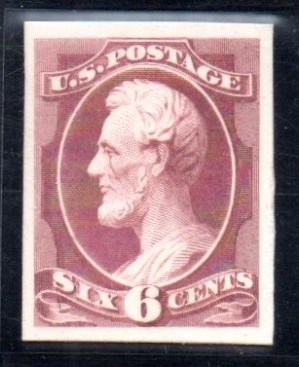
Scott 208P4
Rose
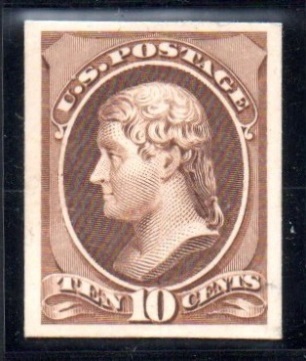
Scott 209P4
Brown
1883
Scott 210-211
On March 3, 1883, Congress approved a reduction in the letter rate, stipulating that it would now be two cents for the first half ounce with each half ounce thereafter being charged the same rate. In October, 1883, the USPOD directed that Washington’s portrait be used on the two cent stamp and instructed that Andrew Jackson be used on a new four cent stamp which would meet the double rate requirement. These Scott 210 and 211, respectively39 .
These stamps would have had card proofs prepared for the last four printings. Determination of printing is made by measurement of the card stock used.
| Scott Number | Denomination | Color |
|---|---|---|
| 210P4 | Two cents | Red Brown |
| 211P4 | Four cents | Green |
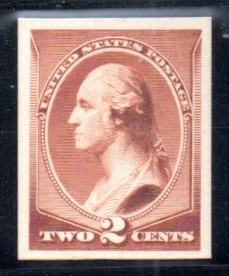
Scott 210P4
Red Brown
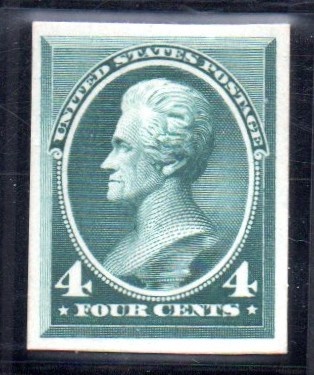
Scott 211P4
Green
1887-88
Scott 212-218
In 1887, a new design was issued for the one cent stamp. Additionally, the USPOD decreed new colors for the two cent, four cent, five cent, thirty cent and ninety cent stamps. 40
The one cent is extremely rare as a card proof and is the key to a collection. It is sometimes offered as a card proof but is in reality a hybrid, being an India proof mounted on card. 41
The following listing provides the basic information about this series:
| Scott Number | Denomination | Color |
|---|---|---|
| 212P4 | One cent | Ultramarine |
| 213P4 | Two cents | Green |
| 214P4 | Three cents | Vermillion |
| 215P4 | Four cents | Carmine |
| 216P4 | Five cents | Indigo |
| 217P4 | Thirty cents | Orange Brown |
| 218P4 | Ninety cents | Purple |

Scott 212P4
Ultramarine
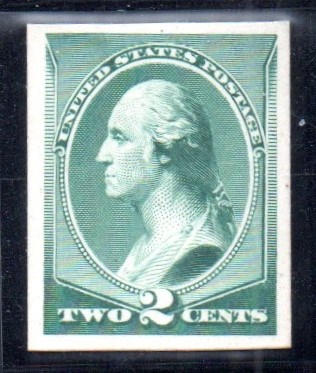
Scott 213P4
Green
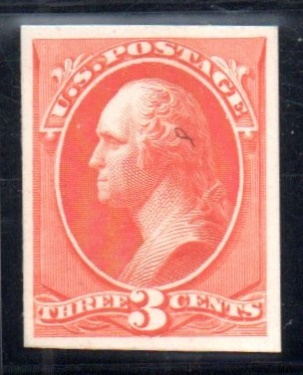
Scott 214P4
Vermillion
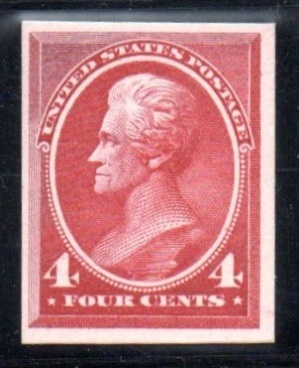
Scott 215P4
Carmine
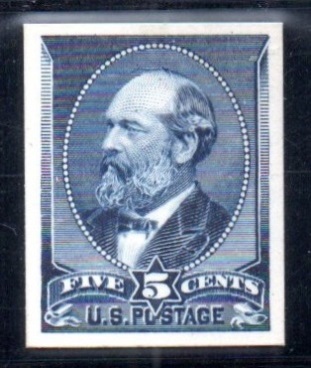
Scott 216P4
Indigo
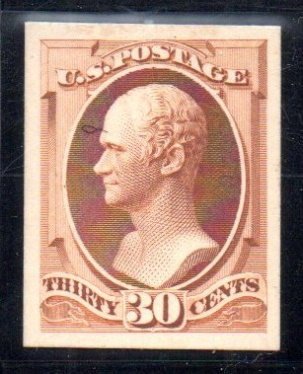
Scott 217P4
Orange Brown

Scott 218P4
Purple
1890-93 Issues
The Small Bank Note Series
American Bank Note Company (ABNC)
In 1889, the USPOD put out for bid the new contract with more stringent requirements, specifying the colors to be used for each denomination and requesting large size stamps, as were currently being used, and a new smaller size, which ultimately would be adopted. After a failure by the original contract winner to meet requirements, a second request for bids was made and would ultimately be awarded the ABNC as their price was substantially under that of the only other bidder. At the end of the day, the USPOD decided to go with the smaller size stamps as that offered further savings. 42
The following information is germane to this issue:
| Scott Number | Denomination | Color |
|---|---|---|
| 219P4 | One cent | Ultramarine |
| 219DP4 | Two cents | Lake |
| 220P4 | Two cents | Carmine |
| 221P4 | Three cents | Purple |
| 222P4 | Four cents | Dark Brown |
| 223P4 | Five cents | Chocolate |
| 224P4 | Six cents | Brown Red |
| 225P4 | Eight cents | Lilac |
| 226P4 | Ten cents | Green |
| 227P4 | Fifteen cents | Indigo |
| 228P4 | Thirty cents | Black |
| 229P4 | Ninety cents | Orange |
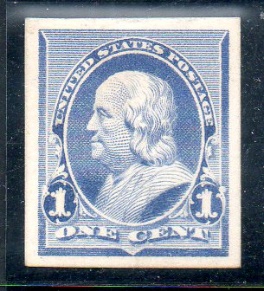
Scott 219P4
Ultramarine
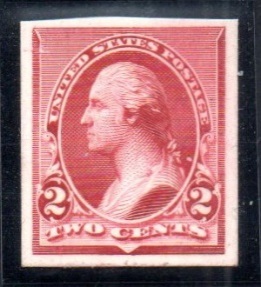
Scott 219DP4
Lake
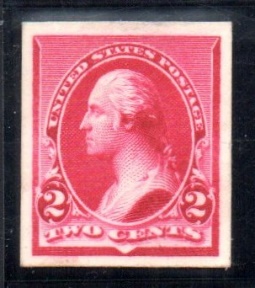
Scott 220P4
Carmine
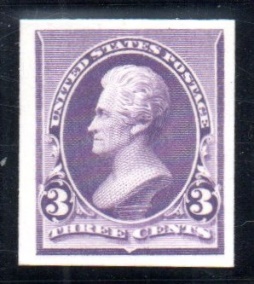
Scott 221P4
Purple
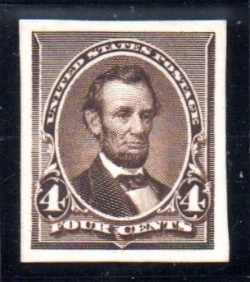
Scott 222DP4
Dark Brown
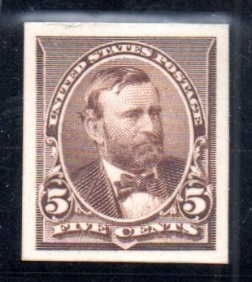
Scott 223P4
Chocolate
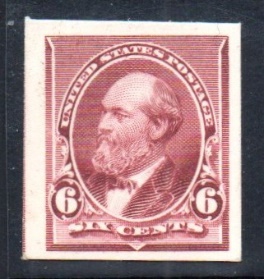
Scott 224P4
Brown Red
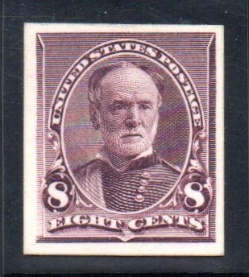
Scott 225DP4
Lilac
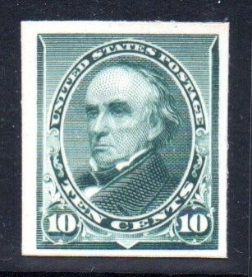
Scott 226P4
Green
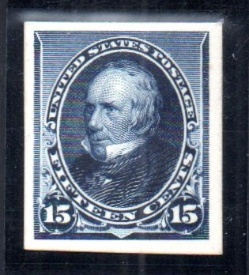
Scott 227P4
Indigo
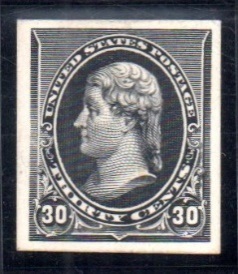
Scott 228DP4
Black
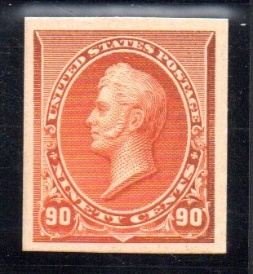
Scott 229P4
Orange
38 Luff, 109-110; Brookman, Vol. III, p. 17
39 Luff, p. 112; Brookman, Vol. III, pp. 5, 11
40 Luff, p. 114
41 Snee, p. 759





